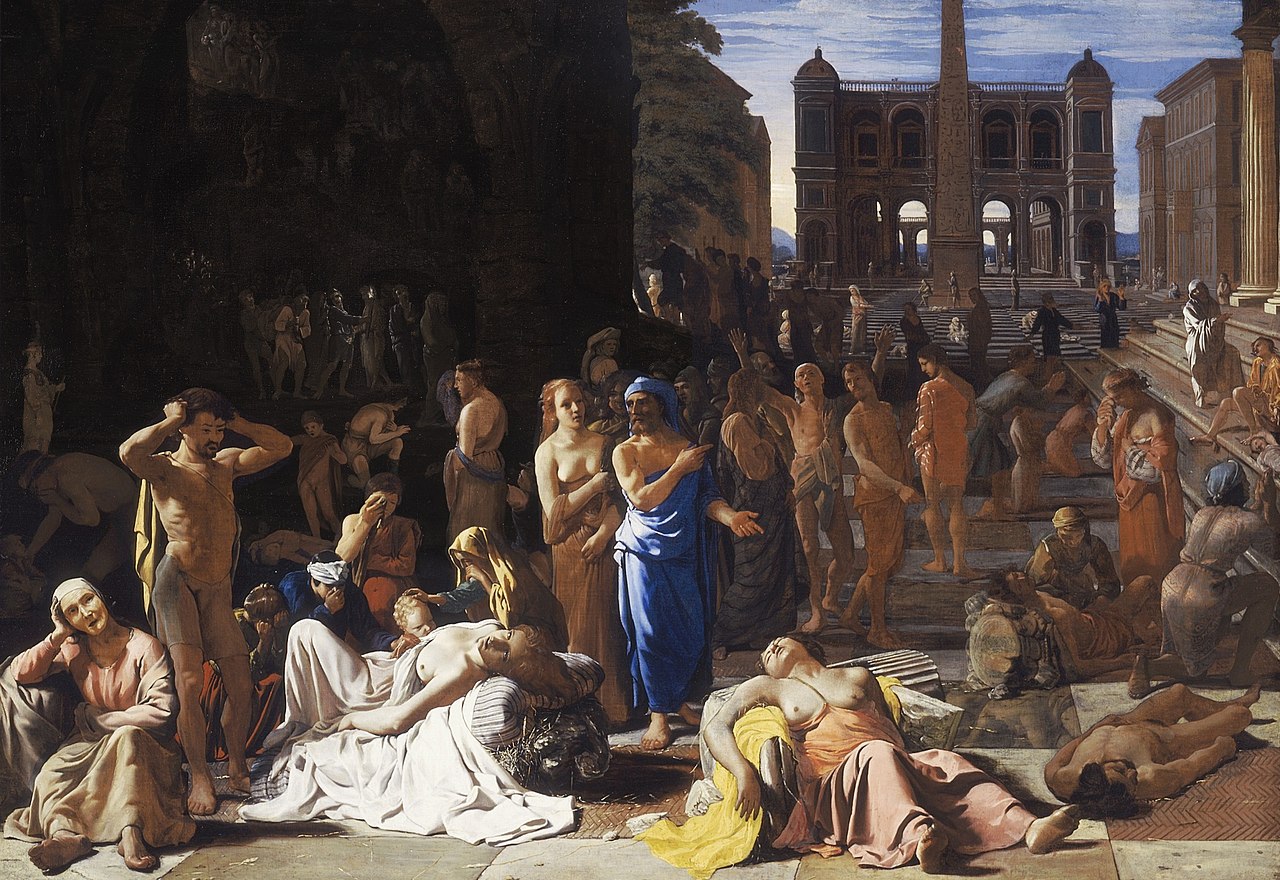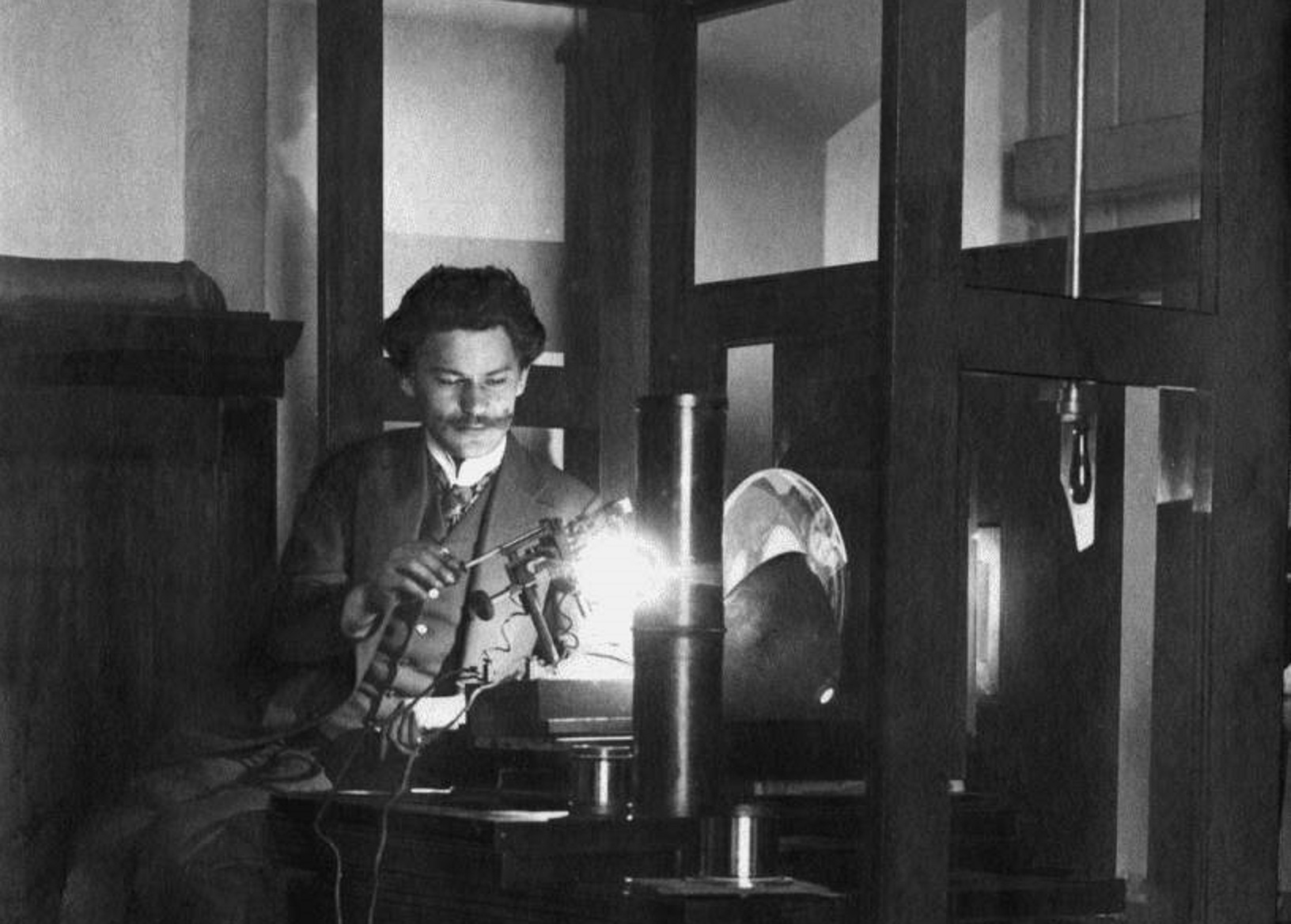Fear has accompanied man’s earthly journey for millennia. Until recently, nuclear war has been the biggest danger. Now, it is climate change. Until the end of the 19th Century, the greatest source of fear was the deadly triumvirate of war, famine and epidemic. Diseases occupy a special place among the roots of our anxiety.
by Michał Kopczyński
Today, we are afraid of cancer, stroke and heart attack. In the past, we were afraid of infectious diseases. This reflects changes in the mortality model that have occurred over the last 150 years. Today, infectious diseases turn out to be lethal to just a few, but only 200 years ago they consumed more victims than all wars combined.
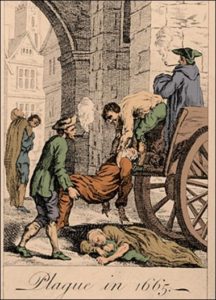
“And no wonder, if they, who were peering continually at the clouds, saw shapes and figures, representations and appearances, which had nothing in them but air and vapor. Here, they told us they saw a flaming sword held in a hand coming out of a cloud, with a point hanging directly over the city; there they saw hearses and coffins in the air carrying to be buried.” – This is how Daniel Defoe described the atmosphere in London on the eve of the plague in 1665. The twin spurs of fear and anxiety prompted people to various crazy and sinful actions. They sought encouraging words from those who were fundamentally evil, and began visiting magicians, clairvoyants and astrologers. This mad situation attracted a swarm of swindlers and conmen. Defoe clearly distances himself from the crowd’s reaction, yet, his attitude was not typical. On 7 March 1711, three gravediggers accused of deliberately spreading the plague were executed in Lublin. While they were being tortured, they admitted that they were spreading the plague out of greed: “we had smashed the corpse’s head, took the brain out and smeared the door of houses with it.” It is not the only case
For four hundred years, from the mid-14th to the mid-18th Century, people observed omens forecasting the coming plague with a palpable sense of dread. In 1591, Doctor Piotr Umiastowski enumerated a catalogue of signs, beginning with comets, passing through rapid weather changes, and ending up at the abundant hatching of frog eggs. Plague was certain when meat exposed to the wind, rotted and a dog who drank the morning dew, died. To escape the plague, one could only flee to the provinces and this is what the rich did. Some – like the characters of Boccaccio’s Decameron were forced to do nothing and amused themselves with telling each other stories, in this case rather naughty and frivolous ones.

In the 19th Century, the Black Death was replaced by cholera and tuberculosis. Smallpox was a real danger among children for hundreds of years. In the early 20th Century, the atmosphere of danger characteristic of the past was briefly revived in 1918-19 due to the influenza pandemic. Over the course of two years, 21.5 million people died, while less than 9 million were killed during the First World War.
It is still unknown what caused of epidemic waves and what resulted in their disappearance. We know too little about the interaction between man and the environment to draw any final conclusions. It is obvious that terrible hygienic conditions and low living standards were important factors contributing to the epidemic.
Leprosy is the first epidemic that has had a great impact on the history of Europe. It was known already in biblical times. Today, it occurs only in the poorest countries of the subtropics, but up to the end of the 19th Century, one could meet its victims in northern Europe. They were signified by the toes or nose falling off, as facial disfigurement is spectacular symptom of this disease. Leprosy meant inevitable exclusion from society, a particularly severe thing at a time when family and neighborhood were a person’s most important points of reference. In Italy, the guards had the task of checking identities and not letting sick people into the city. Legislation, adopted out of fear, ordered lepers to stitch a yellow cross to their clothes and walk around with a noisemaker in order to warn others about the danger of proximity. At the end of the Middle Ages, leprosy became rare in Europe. It disappeared mostly due to effective isolation of patients from the rest of the population, the improvement of living conditions and the increase of new diseases such as tuberculosis and plague.
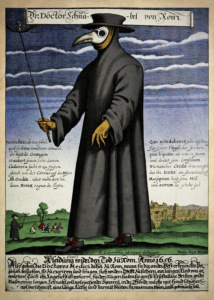
When in the autumn 1347, the Genoese galleys arrived at Messina, no one could have guessed that they had brought from the Black Sea a guest so far unknown – the germ Yersinia pestis. The last plague hit Europe at the end of the 6th and the beginning of the 7th Centuries. From 1347 onwards, it had clearly settled in Europe for good, at least until the mid-18th Century. In 1348, it set off from Italy to Spain and France, in 1349, it visited England, Flanders and Scandinavia. A year later it reached the Baltic Sea; in 1351 it invaded Poland, and in 1353 it entered Russia. It is hard to count the victims. It is assumed that on a continental scale, 30% of the population could have died of plague. In smaller areas, where there is more reliable data, the loss was higher. In Siena, the mortality rate increased by 11 times, and in England the number of leaseholders decreased by half. In the next decades, the plague would return again. In northern Italy, it appeared every 11 years, causing a seven times higher mortality rate. The Black Death, as it was called, began around the year 1000 and put an end to the population growth of Europe.
The plague has left a lasting mark. The depopulation of the villages meant a drastic decrease in the income of knights living on peasant rents. Attempts to raise rents ended up with the peasants’ escaping in the best case, and in the worst – peasant revolts that shook the foundations of the social order. One need only look to Jacquerie in France (1358), and the Peasants’ Revolt of Wat Tyler in England (1381) for proof. It was unprofitable to employ workers due to high wages and the aftermath lead to a crisis of knighthood. Thus many knights turned to banditry, robbing merchants, and, sometimes, even monasteries. As a consequence, many knights lost their social status. In Scandinavia, their number dropped by 60% in the 15th Century.
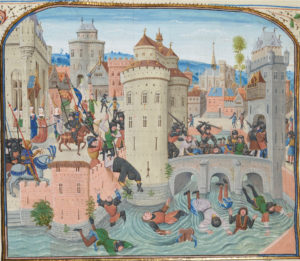
One of the consequences of this fear of the plague was an increased specific and fatalistic way of devotion. The Dance of Death is a typical motif of late medieval art that depicts people marching and flagellating themselves, repenting in public, and, like a choir in Meissen, singing psalms all the time. These are all proof of the universal feeling of fragility of human existence. People were highly interested in ways of securing their salvation in case of sudden death. Hence the rise of indulgences and finally a critical response to it by Luther and his doctrine of salvation by faith, not deeds.
There were also changes in people’s behavior on a rather mundane level. Hygiene researchers note that it was deduced that the disease was a consequence of air penetration through the skin and thus people took baths less frequently than before. In the late Middle Ages, public baths disappeared from the cities, where, along with ablutions, customers could have fun with dice gambling or love affairs. But it was not the moralist’s reprimand that caused them to disappear, rather it was the belief that bathing opened the pores of the skin and put them at risk of death. Lovers of gambling and accidental love hid instead at places run by the executioners’ wives. There they indulged in their favorite activities without risking their lives by taking a bath. The early modern way of hygiene – in the Renaissance, the Baroque, and even the Enlightenment – manifested itself not with a clean body, but with fresh underwear. It is no accident that white shirts and ruffs became a favorite item of clothing. The snowy white color of the cuffs symbolized cleanliness. Any bad smell would be killed by the use of perfumes.

The geographical discoveries of the 16th Century were not only the overseas expansion of the Spanish and Portuguese. It included the transport of European cereals, animals and microorganisms overseas. Already during the second expedition across the Atlantic, Columbus unconsciously transported the flu, killing a significant part of the inhabitants of Hispaniola. The arrival of Cortés to Mexico (1519) is the beginning of the mass extinction of the Aztecs. Not so much due to Spanish cruelty but instead to germs brought from Europe. Between 1548 and 1605, the population of central Mexico decreased from 6 to 1 million, and yet we do not know what the great demographic loss might have been in the first 20 years of the Spaniards’ stay. In place of dying Indians, it was necessary to bring slaves from Africa. To this day there are ongoing disputes about how many Africans were transported to the other hemisphere, probably millions.
The disappearance of the plague in the 18th Century did not free humanity from infectious diseases. The 19th Century was a time of tuberculosis and cholera. The former had been endemic since the earliest times, but in the age of mass deaths caused by plague, it did not seem as scary as it was later. There was a cure against it, anyway. A person with glandular tuberculosis, known as scrofula in the Middle Ages, would be cured after being touched by the French or English king. It is difficult to say how true this was, but crowds of patients seeking the royal touch between the 12th and 18th Centuries indicate that therapy had to work at least sometimes.

The industrial revolution and urbanization facilitated the spread of pulmonary tuberculosis. In the 19th Century, it killed millions of people, and medicine until the invention of streptomycin in 1944 remained helpless. Previous treatments had rarely been successful, but at least one of them is noteworthy. Already in ancient times, Hippocrates recommended traveling to a country with a different climate as a remedy. This therapy was popularized in the 17th Century and spas began to grow in popularity, enabling elites to stay for several months. The Magic Mountain of Thomas Mann would never have been written, and Davos would not have gained today’s fame if not for the fear of tuberculosis. Traveling to health resorts became one of the pillars of the modern tourism industry.
Meanwhile, dozens of doctors in many cities tried to introduce people to customs that would reduce their risk of getting sick. A sufficient number of spittoons should be set up in every public building, says one 1907 recommendation. However, it was only the improvement of living standards, especially the improvement of nutrition combined with the possibility of early diagnosis (X-rays) that effectively prevented tuberculosis.

The other 19th Century curse was cholera. It was endemic in India and was described for the first time by the Portuguese in the 16th Century, and it came to Europe in the 1830s. The Grand Duke Konstantin and Field Marshal Dybicz, the commander of the Russian army fighting in the November Uprising, died of it. Subsequent pandemics came every dozen or so years. Early therapies involving watering the patients with ice water alternately with boiling water accelerated death rather than improved health. It was only the isolation of cholera bacteria by Robert Koch in 1883 that allowed him to develop the right therapy. However, the most effective were preventive measures; compliance with hygiene rules and the construction of water supply systems.
Smallpox is another disease that has accompanied man for millennia. Its place among the main lethal diseases is justified by the fact that after the disappearance of the plague, it was the cause of about 15% of all deaths, and 80% of its victims were children. Perhaps smallpox was already tormenting the ancient Egyptians. However, it is only in the work of a Baghdad doctor named Razes, written in the 9th Century, that we find an exact description. At the beginning of the 16th Century, smallpox reached the Americans, decimating the Indians. The same scenario repeated itself in the northern part of the continent. On 22 May 1634, John Winthorp, the first governor of Massachuests, noted in his journal: “Almost all natives died of smallpox, it is as if God recognized our rights to these lands.” The only way to protect against illness was variolation, which means artificially causing the disease in the hope that its course would be mild, and acquired immunity would help people avoid future infection. The technique of implanting the fluid obtained from smallpox pimples under the skin was described in 1706 by the American pastor Cotton Mather, who in turn was introduced to it by a black slave. At the same time, Lady Mary Wortley Montagu brought news of the variolation practiced in the Middle East to Europe by way of Constantinople. The real flourishing of variolation took place in the second half of the 18th Century. In 1774, French King Louis XV died of smallpox. A month later, the heir to the throne, Louis XVI, was vaccinated against it. Variolation saved him from smallpox, but not from the guillotine. A few years earlier, variolation came to Poland. Already in 1768, the royal physician Dr. Boekler used to vaccinate people against smallpox in the building of the Masonic Lodge.

Variolation was not safe; about 3-4% of those vaccinated would die. The development of a vaccine by the Englishman Edward Jenner turned out to be a real breakthrough. He noted that people who became infected with smallpox from cows gain permanent immunity. Shortly after the publication of the results of the experiment (1798) vaccinia vaccines became popular. In England, within three years, 100,000 were vaccinated and 1.7 million in France (1808-1811). In the following decades, Jenner’s invention grew in popularity. People were not scared hearing stories about a boy who got horns after his vaccination. Vaccination has become compulsory in many countries, but it has its opponents here and there too. Yet, it is thanks to vaccinations that millions of people who would otherwise have died in their childhood were able to enter adult life, have children themselves and thus contribute to the rapid increase in the population of Europe. 177 years after Jenner’s discovery in Bangladesh, the last victim of smallpox died. In 1979, its extermination was officially announced.
The history of contagious diseases and their prevention is a record of fears, with a large dose of helplessness. However, examples of tuberculosis and smallpox prove that the improvement of material conditions and the progress of medical knowledge can lessen even the most terrible plagues, and above all free people from fear, which is often more dangerous than the threat itself.
As chess players say, the threat is stronger than the execution.
Author: Michał Kopczyński
Translation: Alicja Rose & Jessica Sirotin

